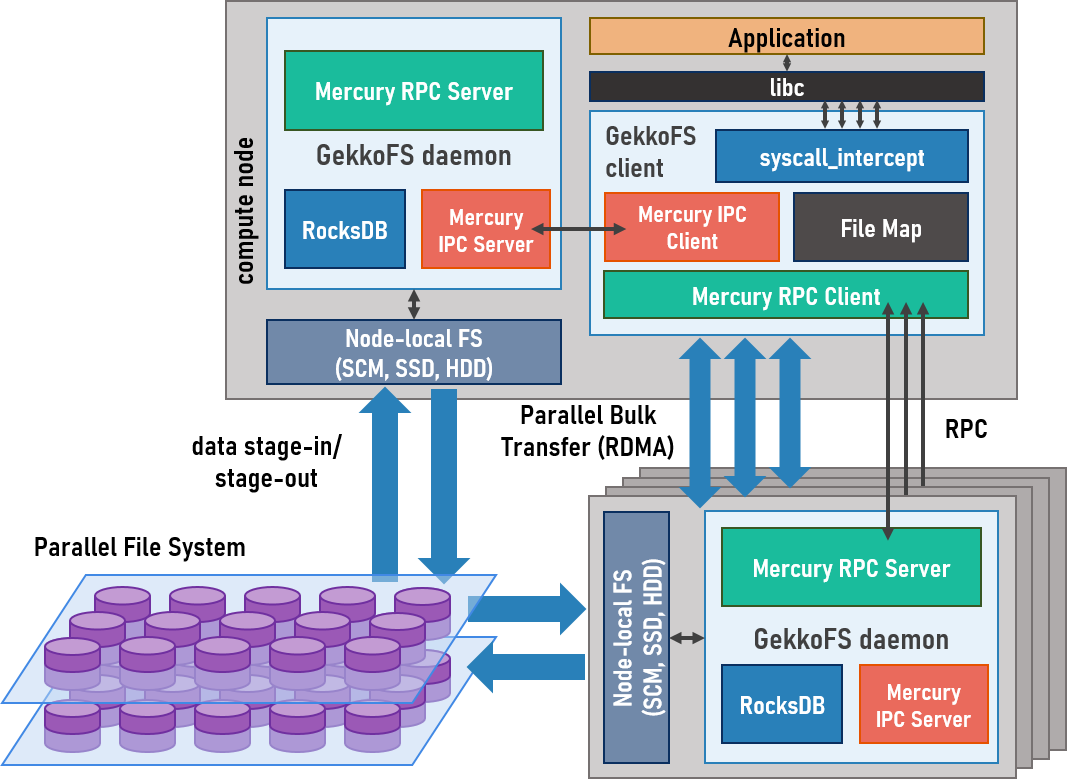GekkoFS: A burst-buffer file system for HPC
GekkoFS is a highly scalable user-level distributed file system for HPC clusters. GekkoFS is capable of aggregating the local I/O capacity and performance of compute nodes to produce a high-performance storage space for applications. With GekkoFS, HPC applications and simulations can run in isolation from each other with regards to I/O, which reduces interferences and improves performance. Furthermore, GekkoFS has been designed with configurability in mind, and allows users to fine tune several of the default POSIX file system semantics (e.g. support for symbolic links or strict bookkeeping of file access timestamps) that, even if useful, might not be required by their applications and hence negatively impact their I/O performance.
Contrary to general purpose file systems, a GekkoFS file system is ephemeral in nature. That is, the lifetime of a GekkoFS file system instance is linked to the duration of the execution of its GekkoFS server processes, which are typically spawned when an HPC job starts and shut down when it ends. This means that users must copy any files that need to be persisted beyond the lifetime of the job from GekkoFS to a more permanent file system such as Lustre or GPFS. Also, because GekkoFS is implemented at user-level, the file system is only visible to applications using one of the GekkoFS client libraries. A consequence of this is that traditional file system tools (ls, cd, etc.) installed by system administrators will not be aware of files in a GekkoFS file system. To solve this, GekkoFS provides a client interception library that can be preloaded before calling these tools.
Architecture

User guide
Developer documentation